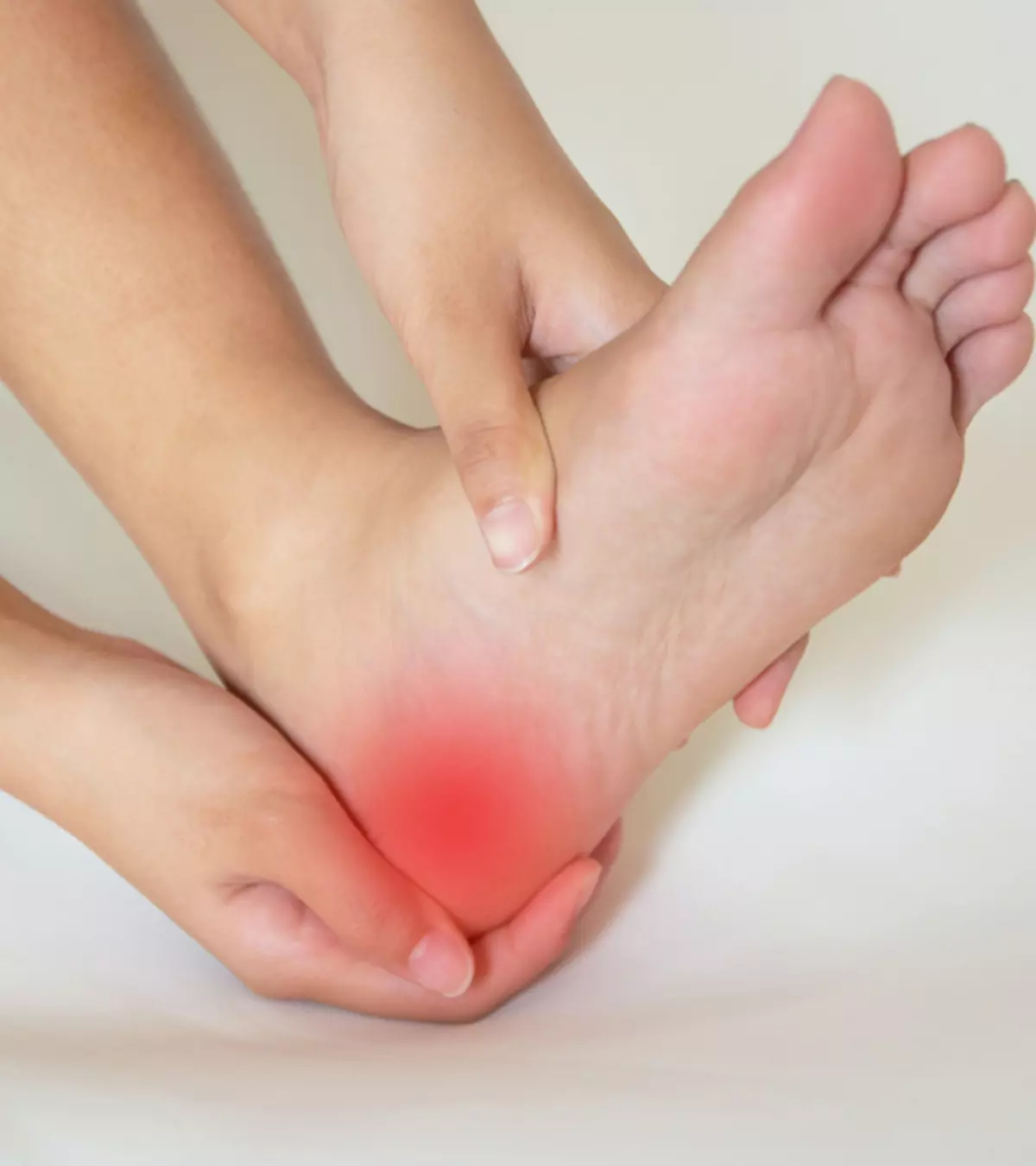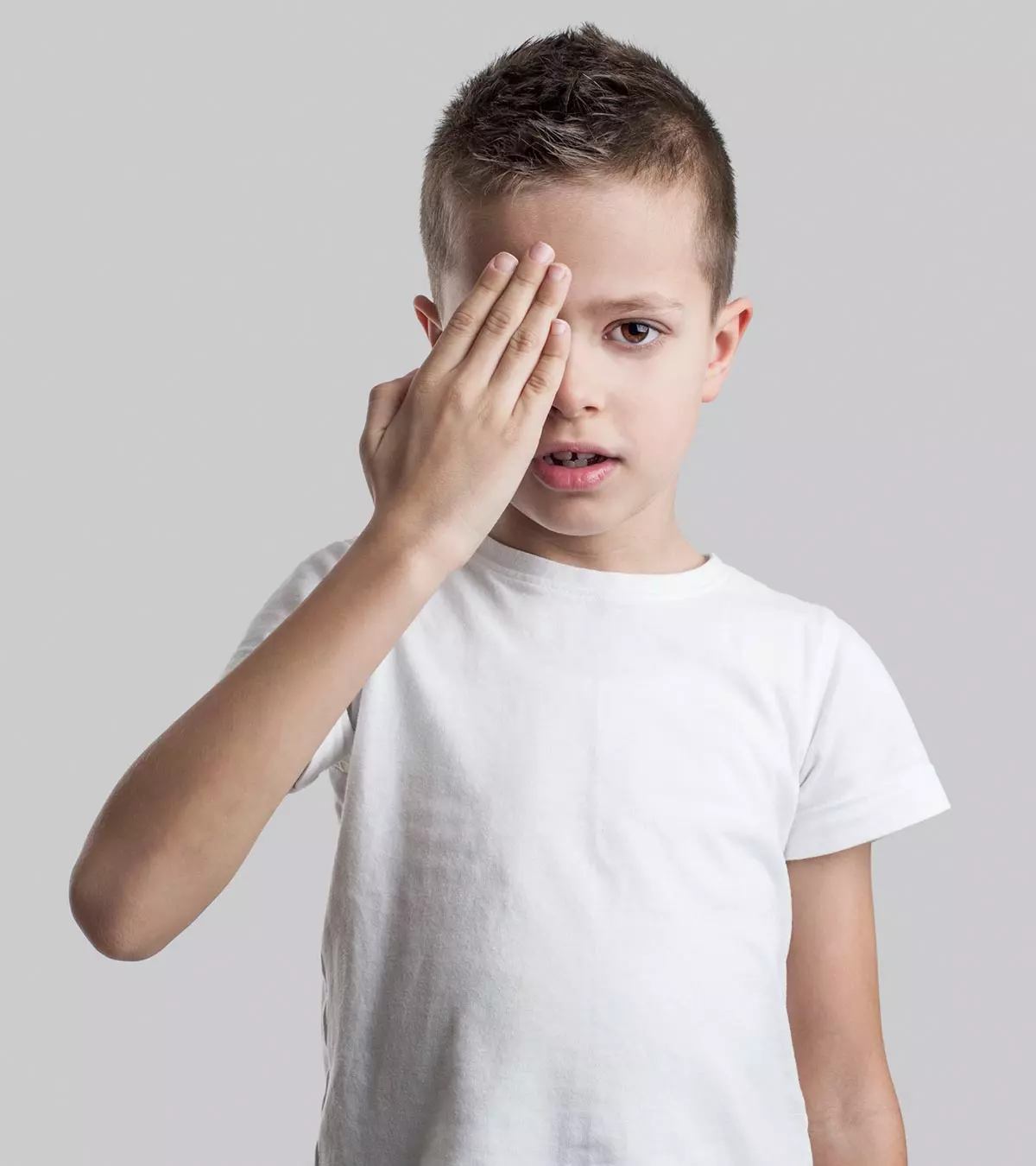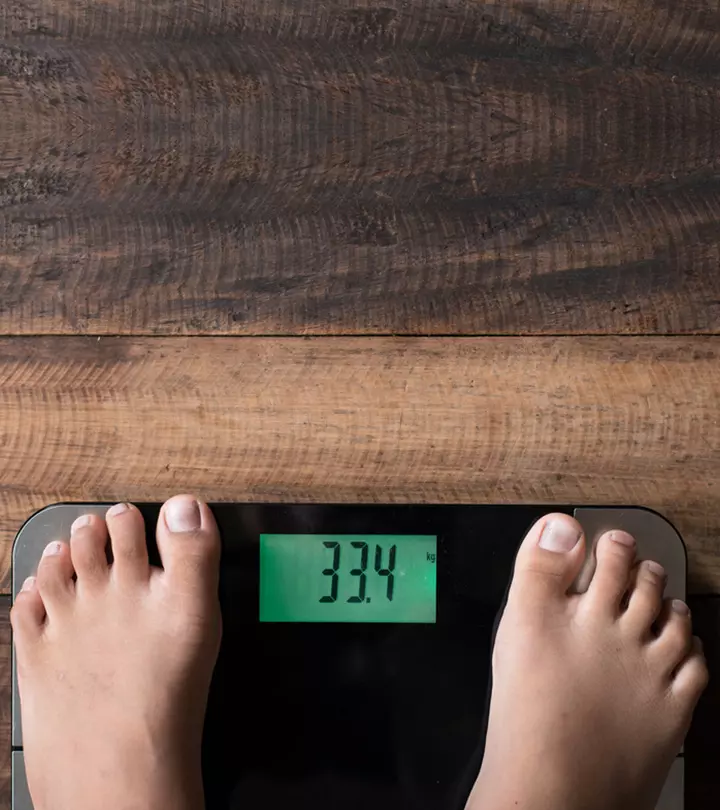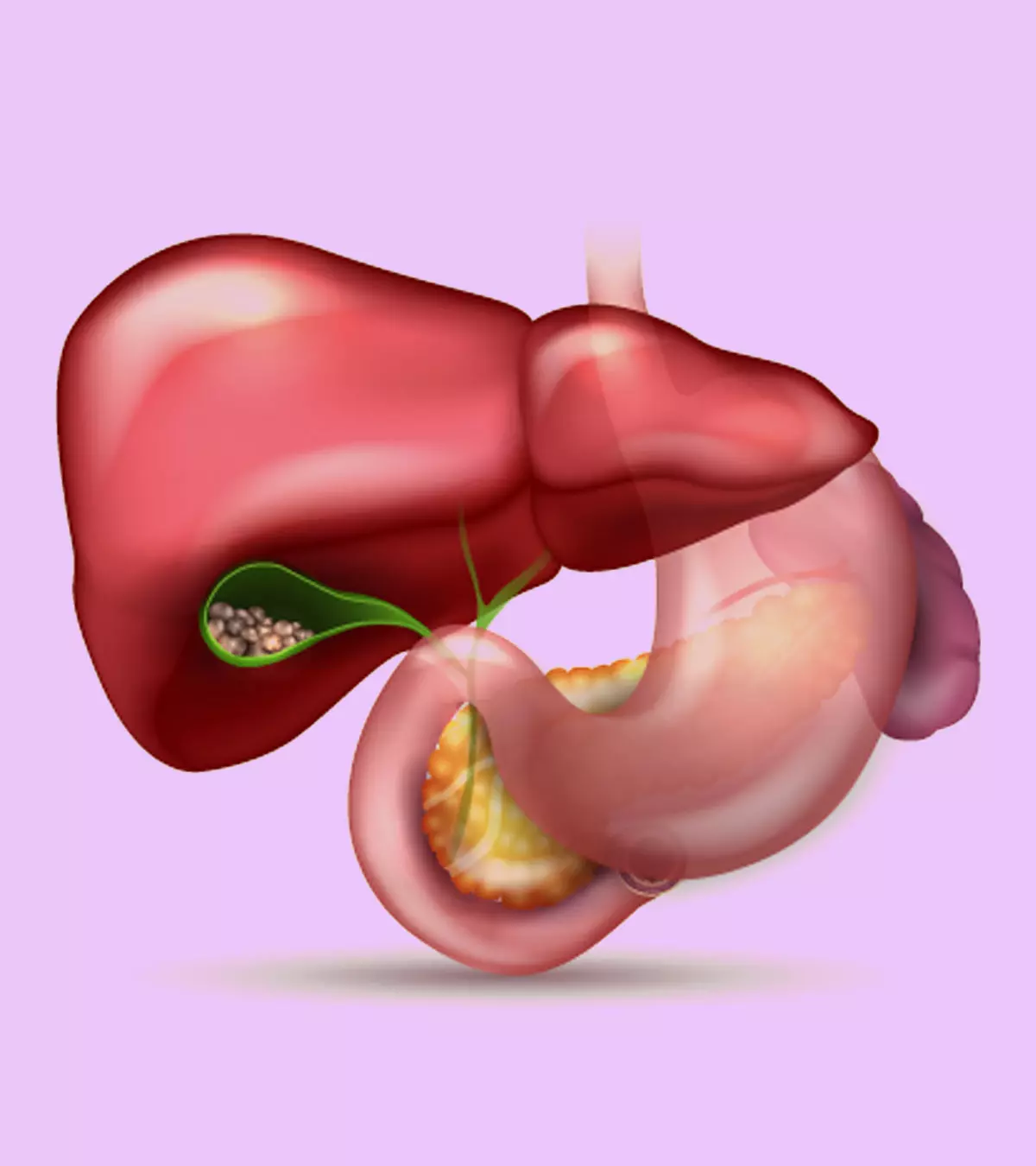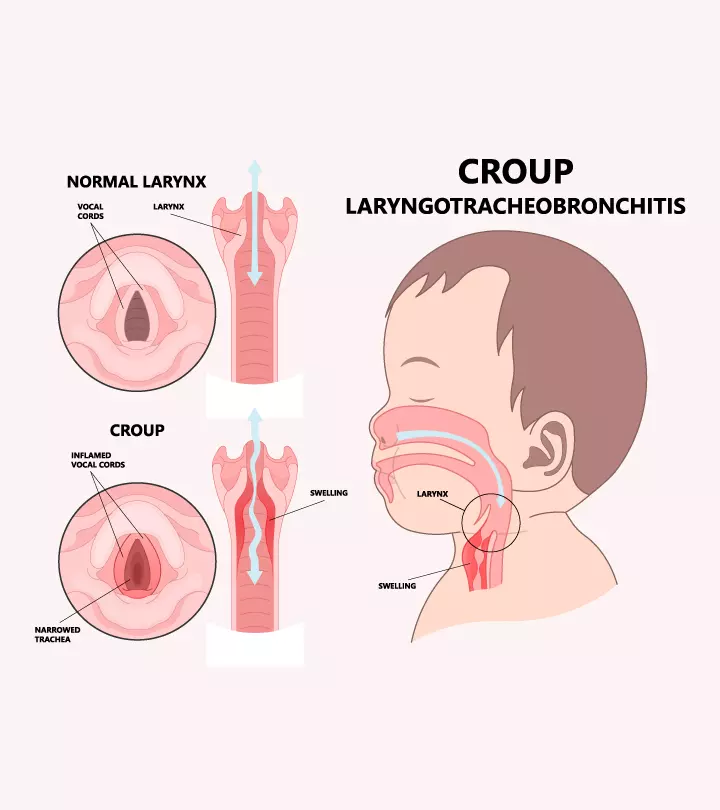
Image: Midjourney/ MomJunction Design Team
Petechiae in children can be a symptom of an underlying illness or bacterial infection. It results in pinpointed, non-blanching spots less than two millimeters in size that may be caused by blood leakage from the capillaries (tiny blood vessels) to the skin.

Petechiae spots often appear on the skin where the body’s mucous membranes are located, such as the arms, stomach, buttocks, and legs. The American Academy of Pediatrics (AAP) states petechiae are usually dark red or purple dots that do not fade when pressed, and immediate medical attention may be necessary if your child has a fever with these rashes (1).
Read on to know the symptoms, causes, and treatment of petechiae in children.
Key Pointers
- Petechiae rashes in children are mostly caused by infections or underlying conditions.
- Seek medical advice if you begin to notice red rashes on your child’s body to avoid further complications.
- Plenty of rest and fluids and following personal hygiene measures could help prevent this condition.
Causes Of Petechiae In Children

The causes of petechiae rashes could range from bacterial, fungal, or viral infection to an underlying blood disorder. Here are some common causes of petechiae in children (2) (3).
- Viral infections such as enterovirus, Epstein-Barr virus infection, and influenza
- Sepsis caused by Neisseria meningitidis bacterial infection (meningococcemia)
Infographic: A Quick Overview Of Petechiae In Children
Some thing wrong with infographic shortcode. please verify shortcode syntax- Cytomegalovirus (CMV) infection
- Blood disorders such as von Willebrand disease thrombocytopeniaiMedical condition of having a low blood platelet count , platelet dysfunction, disorders of coagulation, and loss of vascular integrity
- Other diseases such as dengue fever, Henoch Schonlein purpuraiA vascular disorder that causes swelling and bleeding of small blood vessels and leukemiaiAn umbrella term for blood cancer
On her blog, Aunt Michelle Gourdin speaks on behalf of her niece, Jessica Taylor Reynolds, who was diagnosed with leukemia and had petechiae rashes, “I (Jessica) was diagnosed with acute myeloid leukemia (AML M7). My mom and dad had noticed that I was very pale, bruised very easily, and had petechiae (small purple dots that look like a rash) on my lower legs (i).”
- Congenital abnormalities such as Wiscott-Aldrich syndromeiA genetic immunodeficiency disorder characterized by reduced ability to form blood clots and eczema , Glanzmann thrombastheniaiA rare, genetic bleeding disorder characterized by prolonged or spontaneous bleeding that starts from birth , and Bernard-Soulier syndromei A rare, inherited blood clotting disorder
- Drug reactions, vitamins C and K deficiency, and chronic liver disease
- Mechanical causes such as coughing or vomiting, which may cause increased pressure to the upper body and neck regions, leading to petechiae around the neck region
- Localized physical pressure due to tight stroller straps, car seats, or legs caught in cots
- Accidental and non-accidental bruising and injuries
 Point to consider
Point to considerSymptoms Of Petechiae In Children
Along with the pinpoint rashes, the child may also display other symptoms based on the underlying cause. These symptoms can be grouped into four main types for ease of understanding (4).
1. Unwell children with fever and petechiae
This could be a sign of meningococcal disease, which includes other symptoms such as rashes less than 2mm in diameter, and abnormal blood indices such as white blood cell count > 15*10٨9/L and 8mg/L.
Children would be unwell and also show abnormal vital signs such as tachycardiaiA medical term for having a heart rate above 100 beats per minute , desaturation of air, and increasing systolic to diastolic difference in blood pressure. The child would also have cold extremities, irritability, and lethargy.
2. Well children with fever and petechiae
PurpuraiSmall, flat purple spots on the skin due to leaking blood vessels under the skin less than 2mm in diameter may indicate meningococcal disease. Rashes are mostly seen on the lower limbs and buttocks, with or without arthritis or abdominal pain, possibly due to Henoch Schonlein’s purpura. Petechiae differ from purpura primarily in size, as purpura typically measures over 2mm (3).
3. Petechiae in well children due to mechanical causes
These children do not exhibit any abnormal signs and have a clear history of mechanical causes such as coughing or vomiting, leading to petechiae around the neck region.
4. Well children with petechiae not due to mechanical causes
If the child has fever and petechiae and there are no mechanical causes involved, blood tests must be performed to rule out leukemia. When the child seems well, with a white blood cell count of 5 – 15*10٨9/L, C-reactive protein.
Experts from the American Academy of Family Physicians (AAFP) suggest that children should be evaluated for abuse if they have petechiae or bruises all over their body, especially when blood test results, such as platelet count and coagulation studies, are normal (5).
 Be watchful
Be watchfulDiagnosis Of Petechiae In Children

Your doctor would do a physical examination to identify petechiae and their occurrence on your child’s body. The doctor may also ask questions about other symptoms and the child’s medical history to ascertain the cause of the rashes.
If the cause cannot be identified, your doctor may prescribe the following tests to understand the underlying cause (3).
- Complete blood count (CBC): Assess platelet, white blood cell (WBC), and hemoglobin levels.
- C-reactive protein and blood culture: Check for infections or meningococcal disease if suspected.
- Urine examination: Detect proteinuria (excess protein in the urine) if a kidney disorder is suspected.
- Liver or kidney coagulation profile: Evaluate potential coagulation disorders or liver and kidney diseases.
 Quick fact
Quick factTreatment Of Petechiae In Children
The treatment depends on the underlying cause. If the rashes do not spread and the child has a normal platelet count, they may not require any specific treatment. In such cases, supportive care, including rest, hydration, and monitoring, may be recommended. However, if there is any sign of abnormality in the tests, your child’s doctor will prescribe an appropriate treatment (3).
- If the rashes are due to a drug reaction, they will subside on their own once you stop the medication.
- Antimicrobial therapy may be recommended if the petechiae are due to meningococcal infection (6).
- In the case of Henoch-Schonlein disease, your doctor might recommend bed rest and elevation of the affected areas. They may also prescribe paracetamol or NSAIDs for mild pain. Steroids are given in the case of moderate to severe pain (7).
- Chemotherapy or radiation could be the options for cancer.
Home Care Tips For Petechiae
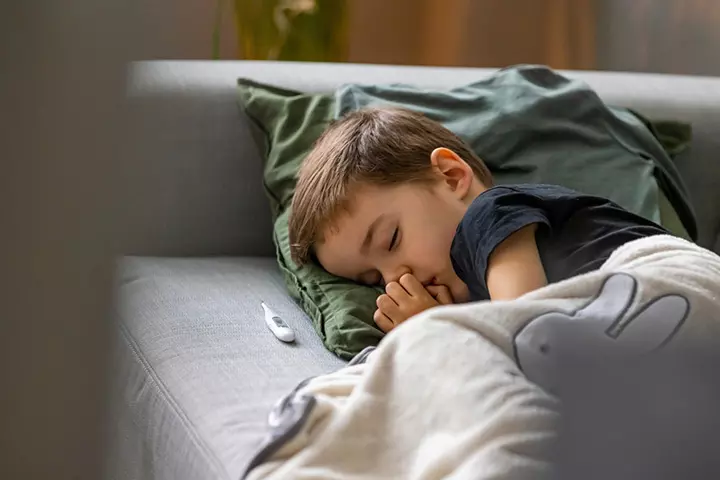
Along with your doctor’s treatment, you can try some of the tips mentioned below to help your child. However, make sure you talk to your doctor before trying any of these home care tips.
- If the reason behind your child’s petechiae is due to medications, stop them and observe the rashes every hour to see if they are subsiding or spreading.
- Help your child take adequate rest. If the rashes are due to a bacterial or viral infection, do not send your child to school. A single bacterial or viral rash in children could be highly contagious.
- Keep them hydrated by giving them fluids such as water and fruit juices.
When To See A Doctor?
If your child’s rash does not improve with home care, or if any of these symptoms accompanies petechiae, contact your doctor (3) (8):
- Persistent high fever
- Fast-spreading red spots on the skin
- Fast heart rate
- Weigh loss
- Pale skin
- Dizziness
- Fainting
- Difficulty breathing
- Confusion
- Uncommon bruising with petechiae
- Signs of injury or neglect
Prevention Of Petechiae
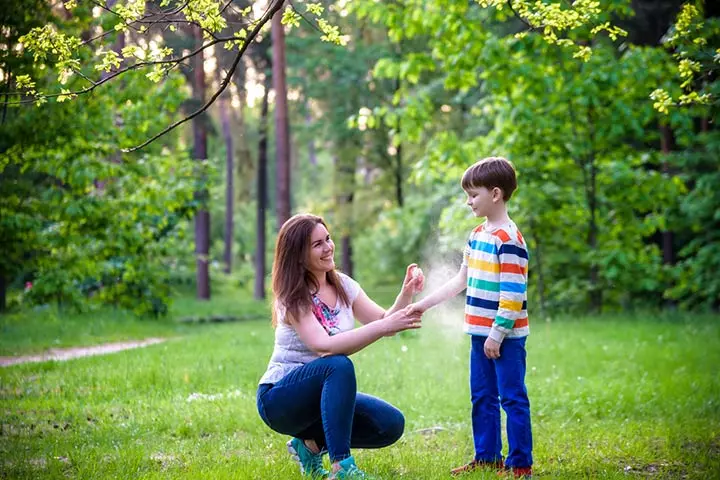
You may not be able to prevent petechiae if the underlying cause is an autoimmune disorderiDisorders where the body's immune system mistakes healthy tissues for foreign bodies and tries to damage them or cancer. However, infections and mechanical causes can be prevented by following the tips mentioned below (8).
- Inform your doctor of any allergies or drug reactions your child might have.
- Make sure the stroller straps, belts, etc. are not too tight.
- Keep your child away from family members or people who are sick.
- Do not share their items, such as glasses or towels, with others.
- Always apply insect repellent on your child’s body if they are heading to the playground or the woods.
- Instruct your children to wash their hands before eating and after coming home from the playground.
Frequently Asked Questions
1. Do petechiae always signify leukemia?
No, petechiae and leukemia are not exclusively related (9).
2. Are there any long-term effects of petechiae in children?
Petechiae is not known to cause complications or long-term effects in children. It usually disappears after a few days, but if it lasts long and spreads all over the body, it is probably caused by an underlying illness, and the condition will resolve when the underlying illness is cured (11):
3. What autoimmune diseases cause petechiae?
Dr. Leah Alexander, a pediatrician from Fairview, New Jersey, says, “Petechiae may be caused due to an autoimmune disorder like systemic lupus erythematosus (SLE) or an autoimmune response to a viral or bacterial infection. One of the common examples is Henoch-Schonlein Purpura (HSP). Some viral infections can cause the immune system to attack platelets, the cells that help blood clot. This condition is known as immune thrombocytopenia (ITP), characterized by petechiae all over the body.”
4. How can I differentiate between petechiae and other rashes?
Petechiae are small, pinpoint, red or purple spots that do not change color (blanch) or disappear when pressed. In contrast, other types of rashes might change color or texture when pressed (4).
Petechiae in children is a condition in which they develop red rashes all over their bodies. Depending on the associated symptoms, petechiae can be classified as sick children with fever and petechiae, in well children with fever and petechiae, petechiae in well children due to mechanical causes, and petechiae in healthy children due to non-mechanical factors. It’s a typical symptom of various diseases, infections, and allergic reactions. So, if you notice petechiae on your child’s skin, it’s ideal to have it checked and treated as soon as possible.
Petechiae in children could be due to an underlying issue. The experts in this video discuss its causes, symptoms, diagnosis, and treatments.
Personal Experience: Source
MomJunction articles include first-hand experiences to provide you with better insights through real-life narratives. Here are the sources of personal accounts referenced in this article.
i. Our little Jessie Bee.https://ourlittlejessiebee.blogspot.com/2010/11/about-my-diagnosis.html
References
- Rash or Redness – Widespread
https://www.healthychildren.org/spanish/tips-tools/symptom-checker/paginas/symptomviewer.aspx?symptom=Rash+or+Redness+-+Widespread - Petechiae and purpura with/without fever; Starship Hospital
https://starship.org.nz/guidelines/petechiae-and-purpura-with-without-fever/ - Ailbhe McGrath and Michael J. Barrett; Petechiae; StatPearls (2025).
https://www.ncbi.nlm.nih.gov/books/NBK482331/ - Petechiae and purpura; The Royal Children’s Hospital Melbourne
https://www.rch.org.au/clinicalguide/guideline_index/Fever_and_Petechiae_Purpura/ - Alexander K.C. Leung and Ka Wah Chan (2001); Evaluating the Child with Purpura.
https://www.aafp.org/pubs/afp/issues/2001/0801/p419.html#:~:text - Acute meningococcal disease; The Royal Children’s Hospital Melbourne
https://www.rch.org.au/clinicalguide/guideline_index/Acute_Meningococcal_Disease/ - Henoch-Schönlein purpura; The Royal Children’s Hospital Melbourne
https://www.rch.org.au/clinicalguide/guideline_index/HenochSchonlein_Purpura/ - Petechiae; Cleveland Clinic
https://my.clevelandclinic.org/health/symptoms/21636-petechiae - Signs and symptoms of leukemia; Moffitt Cancer Center
https://www.moffitt.org/cancers/leukemia/signs-symptoms - Petechiae.
https://www.fairview.org/ - Petechiae: What Is It, Causes, Treatment, and More | Osmosis
https://www.osmosis.org/answers/petechiae#:~:text=In%20most%20cases%2C%20petechiae%20resolve,the%20underlying%20cause%20is%20addressed.
Community Experiences
Join the conversation and become a part of our nurturing community! Share your stories, experiences, and insights to connect with fellow parents.
Read full bio of Dr. Neema Shrestha
- Dr. Leah Alexander is a board-certified pediatrician who provides medical care in an outpatient setting in Fair Lawn, New Jersey. She has also been working as a pediatrician with Medical Doctors Associates at Pediatricare Associates, New Jersey, since 2005. Dr. Alexander holds a bachelor's degree in Health Science from Kalamazoo College and a Doctor of Medicine degree from Michigan State University.
 Dr. Leah Alexander is a board-certified pediatrician who provides medical care in an outpatient setting in Fair Lawn, New Jersey. She has also been working as a pediatrician with Medical Doctors Associates at Pediatricare Associates, New Jersey, since 2005. Dr. Alexander holds a bachelor's degree in Health Science from Kalamazoo College and a Doctor of Medicine degree from Michigan State University.
Dr. Leah Alexander is a board-certified pediatrician who provides medical care in an outpatient setting in Fair Lawn, New Jersey. She has also been working as a pediatrician with Medical Doctors Associates at Pediatricare Associates, New Jersey, since 2005. Dr. Alexander holds a bachelor's degree in Health Science from Kalamazoo College and a Doctor of Medicine degree from Michigan State University.
Read full bio of Dr Bisny T. Joseph
Read full bio of Dr. Ritika Shah
Read full bio of Vidya Tadapatri







